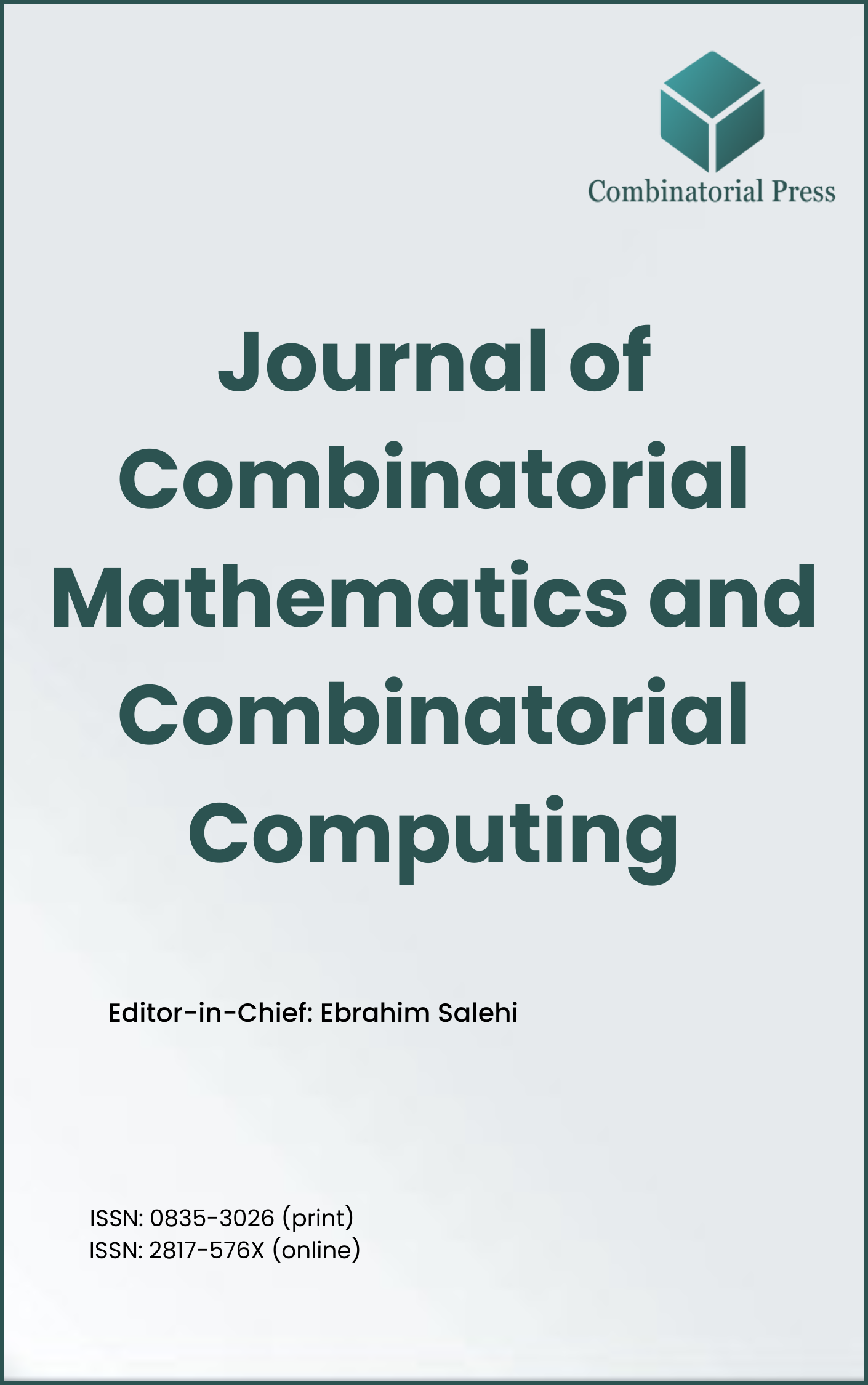
Journal of Combinatorial Mathematics and Combinatorial Computing
ISSN: 0835-3026 (print) 2817-576X (online)
The Journal of Combinatorial Mathematics and Combinatorial Computing (JCMCC) embarked on its publishing journey in April 1987. From 2024 onward, it publishes four volumes per year in March, June, September and December. JCMCC has gained recognition and visibility in the academic community and is indexed in renowned databases such as MathSciNet, Zentralblatt, Engineering Village and Scopus. The scope of the journal includes; Combinatorial Mathematics, Combinatorial Computing, Artificial Intelligence and applications of Artificial Intelligence in various files.
- Research article
- Full Text
- Journal of Combinatorial Mathematics and Combinatorial Computing
- Volume 019
- Pages: 93-95
- Published: 31/10/1995
Here we present
- Research article
- Full Text
- Journal of Combinatorial Mathematics and Combinatorial Computing
- Volume 019
- Pages: 65-92
- Published: 31/10/1995
There are many graphs with the property that every subgraph of a given simple isomorphism type can be completed to a larger subgraph which is embedded in its ambient parent graph in a nice way. Often, such graphs can be classified up to isomorphism. Here we survey theorems on polar space graphs, graphs with the cotriangle property, copolar graphs, Fischer spaces, and generalized Fischer spaces, as well as graphs with the odd coclique property.
- Research article
- Full Text
- Journal of Combinatorial Mathematics and Combinatorial Computing
- Volume 019
- Pages: 55-63
- Published: 31/10/1995
Permutation graphs, a well-known class of perfect graphs, has attracted the attention of numerous researchers. There are two noteworthy representations of permutation graphs. Permutation diagrams have been widely employed in theoretical and application research. The
- Research article
- Full Text
- Journal of Combinatorial Mathematics and Combinatorial Computing
- Volume 019
- Pages: 48-54
- Published: 31/10/1995
In this paper, we investigate the relationship between the profiles of Hadamard matrices and the weights of the doubly even self-orthogonal/dual
- Research article
- Full Text
- Journal of Combinatorial Mathematics and Combinatorial Computing
- Volume 019
- Pages: 33-47
- Published: 31/10/1995
Let
- Research article
- Full Text
- Journal of Combinatorial Mathematics and Combinatorial Computing
- Volume 019
- Pages: 3-31
- Published: 31/10/1995
The Balanced Network Search (BNS) is an algorithm which finds a maximum balanced flow in a balanced network
- Research article
- Full Text
- Journal of Combinatorial Mathematics and Combinatorial Computing
- Volume 018
- Pages: 245-254
- Published: 30/06/1995
The total chromatic number
- Research article
- Full Text
- Journal of Combinatorial Mathematics and Combinatorial Computing
- Volume 018
- Pages: 233-244
- Published: 30/06/1995
Let
- Research article
- Full Text
- Journal of Combinatorial Mathematics and Combinatorial Computing
- Volume 018
- Pages: 225-232
- Published: 30/06/1995
Let
- Research article
- Full Text
- Journal of Combinatorial Mathematics and Combinatorial Computing
- Volume 018
- Pages: 214-224
- Published: 30/06/1995
In this paper, scheduling problems with communication delays are considered. Formally, we are given a partial order relation





